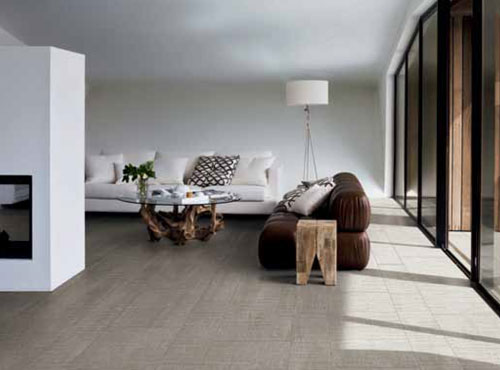An Ecological Basis for Selecting Ceramic Tile
A Basis for Green Building Comparisons
These cumulative environmental benefits and performance capabilities offer compelling reasons to use ceramic tile and porcelain tile. However many building materials lend some advantages in green building, so it is useful to compare the attributes of varied assemblies, materials, and finishes to determine which best meets the sustainability needs of any given project.
“LCA is becoming one of the most valuable tools for green design professionals to utilize when selecting material finishes,” says Fasan. “Unfortunately it has been difficult to assess competitive materials simultaneously on embodied energy, maintenance, replacement frequency, costs, and aesthetics to create an even playing field.” Fasan points to the use of reference service life (RSL), also known as RCA, to rank disparate LCA studies on competitive materials. RSL allows design professionals to ensure a building project or material will have an estimated service life that meets or exceeds its design life. This means fewer premature renovations or repairs.
Ceramic tile fares well in RSL analysis, which amortizes the embodied energy and virgin resource usage of ceramic tile over an appropriate building lifespan. As a result, studies demonstrate it as one of the most efficient choices available. In the context of functional resilience, tile also delivers resistance to both daily wear-and-tear and exceptional instances such as hurricanes, flooding, and other weather disasters. This addresses the concerns of groups like the Institute for Business and Home Safety (IBHS), a national association representing the insurance and re-insurance industries. IBHS has developed a program called FORTIFIED®, which focuses on the need for more durable, disaster-resistant construction methods, according to the Portland Cement Association (PCA).
Functional resilience is hardly limited to disaster resistance, says the group. Add to it product robustness, longevity, and durability, and the result is less energy needed for product “repair, removal, disposal, and replacement of building materials and contents due to routine maintenance and operations, as well as disasters,” says PCA. “Functionally resilient buildings create safe, secure, comfortable, and productive environments.”
The fact is that ceramic tile is not only green by the current definition but a truly sustainable building material that has protected buildings and their occupants for millennia. The material's ability to survive in-situ for the life of the building is the main criterion; as a secondary factor, the material must be both cost-effective and resource-effective to produce, install, and maintain.
Evaluating Tile and Other Materials, Finishes
The environmental basis for comparing building finish materials may include owner and occupant preferences, the design team's prerogatives, and industry standards. While LEED is among the most common standards used, today there are others including the International Green Construction Code, introduced in early 2012, and state and regional codes including California's CalGreen, which went into effect in that state in January 2011.
The primary focus of LEED is to alleviate major environmental burdens regarding energy and water consumption along with methods for reducing waste and improving occupant health. The six main areas in the certification system for tallying the benefits of ceramic tile include: salvage and reuse; construction waste management; recycled content; regional materials; rapidly renewable materials; and low-emitting materials. Yet there are other critical benefits supported by ceramic tile.
 |
This large-format, grey porcelain floor tile is slimmer in thickness and lighter in weight than typical floor tiles, and available with digitally produced patterns and textures. Photo courtesy of Tile of Spain / Inalco |









